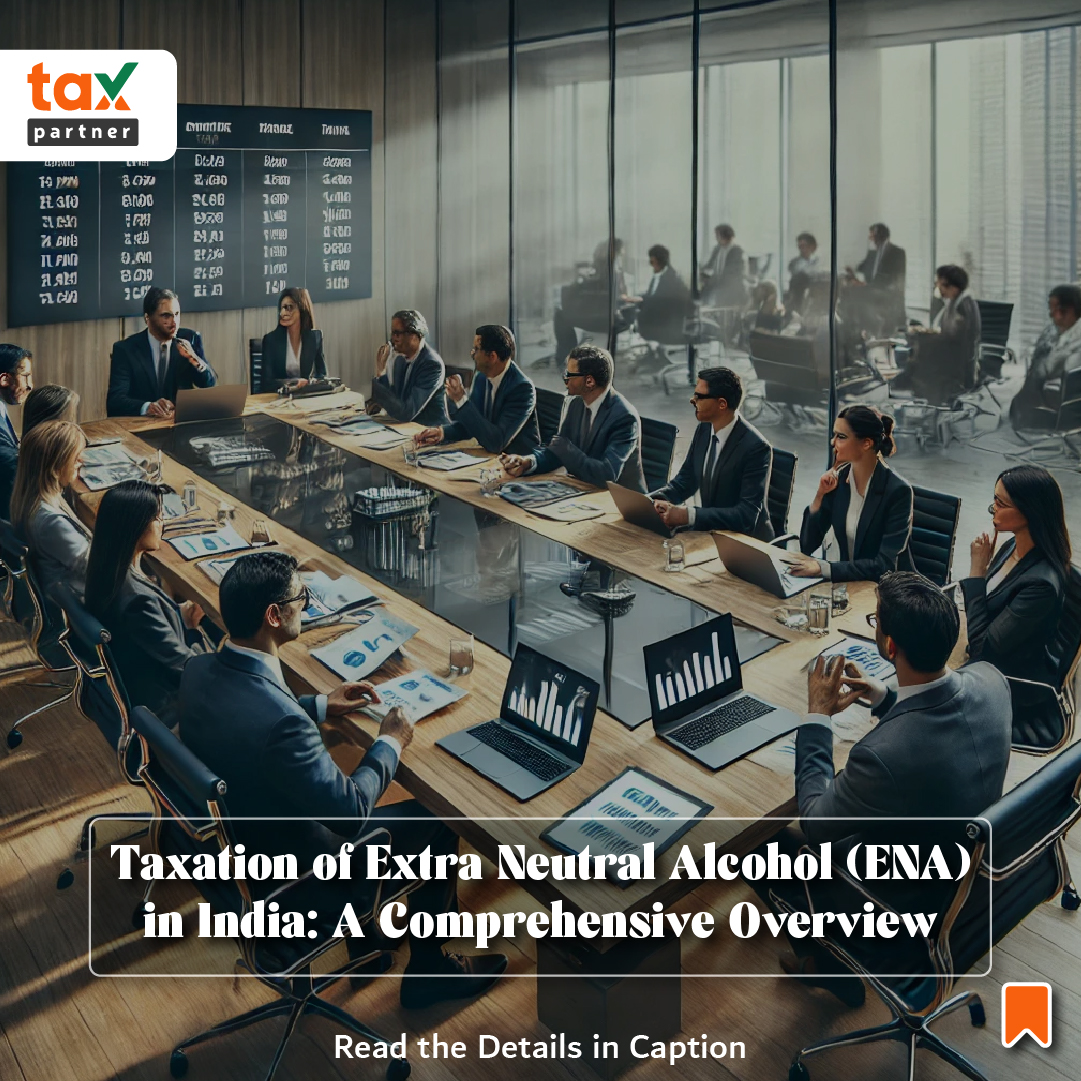Connect with us for all your queries



In India, the taxation of Extra Neutral Alcohol (ENA), a crucial input in the production of alcoholic beverages, has long been a contentious issue. ENA, widely used in the manufacturing of both potable alcohol and industrial products, occupies a unique space in the country’s regulatory framework. While the production and sale of alcoholic liquor for human consumption fall under the purview of State Governments, the applicability of the Goods and Services Tax (GST) to ENA, especially when used in the production of liquor, has been debated extensively. This article explores the complexities surrounding the taxation of ENA and the recent developments that aim to bring clarity to the issue.
ENA, a high-purity ethyl alcohol, is a primary raw material in the production of both Indian Made Foreign Liquor (IMFL) and Indian Made Indian Liquor (IMIL). It constitutes about 43% of IMFL and 35% of IMIL. However, ENA is also used for industrial purposes, creating a duality in its usage. This duality has led to confusion over whether ENA should be taxed under the purview of GST or fall under the taxation regime of the states.
Under the Constitution of India, the power to tax alcoholic liquor for human consumption is exclusively vested with the States. However, the Centre has maintained that ENA, in its raw form, should attract GST when it is used for industrial purposes. This conflict between the Centre and the States has led to issues in the taxation of ENA, creating a dual-taxation scenario that has troubled the industry for years.
The introduction of GST in 2017 brought several goods and services under a unified tax regime, but alcoholic beverages were explicitly excluded from the scope of GST. This exclusion gave the States the authority to impose taxes on liquor. However, ENA, as a precursor to the production of alcoholic beverages, remained a grey area. While the Centre argued that GST should be applicable to ENA used in industrial production, the States contended that ENA used in the production of potable alcohol should be taxed under the existing State excise duties.
This lack of clarity resulted in varying practices across states, with some imposing GST on ENA, while others levied VAT or Central Sales Tax (CST), treating ENA as part of the production process of alcoholic beverages. This created complications for liquor manufacturers who found themselves dealing with a distorted Input Tax Credit (ITC) mechanism, as the GST paid on ENA could not be offset against the state excise duties levied on the final product.
The taxability of ENA has been addressed in several landmark court cases. In State of Uttar Pradesh vs. Modi Distillery (1995), the Supreme Court held that states could only impose excise duty on alcoholic liquor for human consumption once its manufacture was complete. This meant that the raw material used to make alcoholic liquor, such as ENA, could not be taxed until it was rendered fit for consumption. However, the case of Bihar Distillery vs. Union of India (1997) introduced a different interpretation, stating that ENA could be taxed by the States if it was intended for the production of potable alcohol.
These divergent rulings contributed to the ongoing debate about whether ENA should fall under State or Central jurisdiction, leaving the issue unresolved for years.
The GST Council, the body responsible for making recommendations on GST rates and policies, has held multiple discussions on the taxability of ENA. One of the most notable discussions took place during the 52nd GST Council Meeting in October 2023, where significant progress was made in resolving the issue.
The Council recommended that ENA, when used in the manufacture of alcoholic beverages for human consumption, should be excluded from the ambit of GST. This decision aligns with the constitutional provisions that give States the exclusive right to tax alcoholic liquor for human consumption. To formalize this recommendation, the Council directed the Law Committee to draft the necessary amendments to the GST legislation.
Additionally, the Council suggested a reduction in the GST rate on molasses from 28% to 5%. This move is expected to benefit the sugar industry, particularly sugar mills, by improving liquidity and reducing the cost of producing cattle feed, which relies on molasses as a key ingredient. The Council also proposed the creation of a separate tariff classification for rectified spirits used in industrial applications, which will continue to attract GST at 18%.
Following the 52nd GST Council Meeting, the Ministry of Finance issued Notification No. 17/2024, which clarified the taxability of ENA. Effective from November 1, 2024, ENA used in the manufacture of alcoholic beverages for human consumption will be excluded from GST. This change is expected to bring much-needed clarity to the liquor industry, which has been grappling with the complications arising from dual taxation.
By exempting ENA from GST when used in the production of potable alcohol, the financial burden on the industry will be significantly reduced. Liquor manufacturers will no longer face the challenge of dealing with both GST and State excise duties on the same input, thereby streamlining the taxation process and making the ITC mechanism more efficient.
The taxation of ENA in India has been a contentious issue for many years due to its dual usage in both industrial and potable alcohol production. While the Centre and States have held differing views on the applicability of GST to ENA, the recent recommendations from the GST Council represent a step toward resolving this long-standing issue. With ENA now set to be excluded from GST when used in the manufacture of alcoholic beverages for human consumption, the liquor industry can expect relief from the complexities of dual taxation. This decision not only clarifies the tax structure for ENA but also supports the industry by reducing costs and ensuring smoother compliance with taxation laws.
The legislative amendments, effective from November 1, 2024, reflect the constitutional provisions that grant States the power to tax alcoholic liquor for human consumption, while ensuring that ENA, when used for industrial purposes, remains within the ambit of GST. This balanced approach provides much-needed clarity to the taxation of ENA, benefiting both the liquor and industrial sectors.
Tax Partner is India’s most reliable online business service platform, dedicated to helping you in starting, growing, & flourishing your business with our wide array of expert services at a very affordable cost.